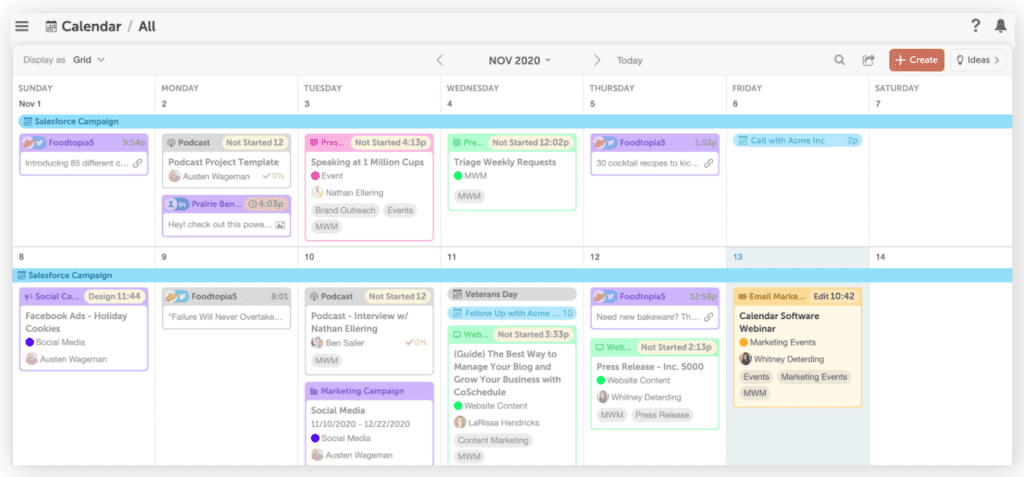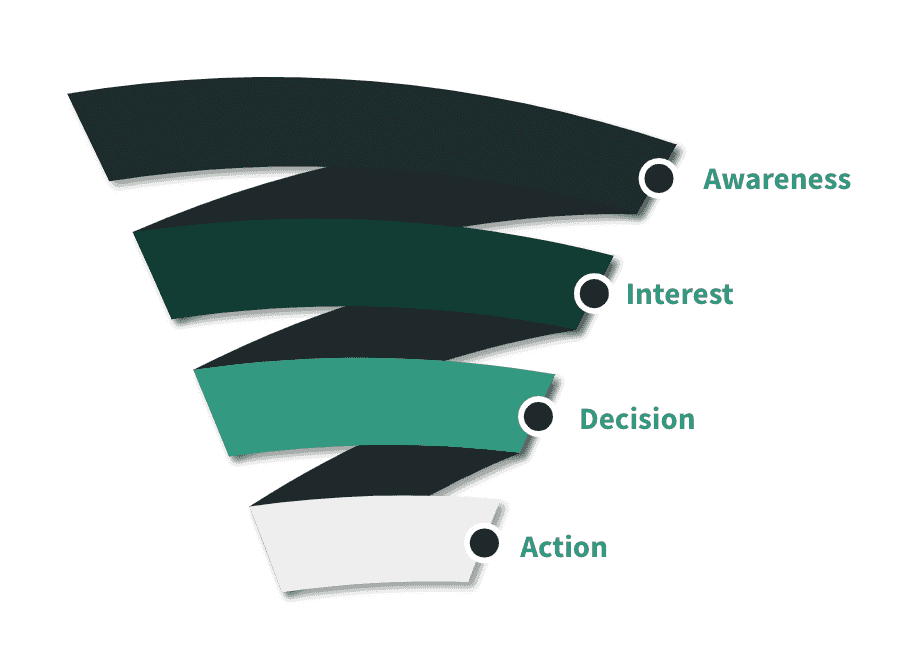Let’s talk about generating qualified traffic that is ready for conversion.
Understanding Product-Led Growth
Product-led growth means that your company’s strategy for finding and converting new leads and customers is focused on your product.
Your growth comes from customers loving your product (and talking about it), and not from ebook downloads or white paper views.
Instead of focusing on the three main funnel stages (top of funnel, middle of funnel, bottom of funnel), you focus on the business potential of each marketing activity.
It’s an approach that works; companies that became known for a product-led growth strategy include Slack, Dropbox, Typeform, MailChimp, and Loom, among others.
Dr. Fio Dossetto defines product led-content marketing as:
“Content where the product is woven into the narrative to illustrate a point, solve a problem and/or help accomplish a goal.”
Product-led content marketing sits at the intersection of content marketing, product development, and customer success.
Bear in mind: These are still blog posts and pillar pages. We are not talking about a sales page optimized for conversion.
In the SEO space, one company that became known for product-led growth and content marketing is Ahrefs.
CMO Tim Soulo says:
“All we care about is business potential. To assess the business potential of each keyword and topic, we’ve developed something we call the Business Potential Score. And we only try to target topics where our product is an almost irreplaceable solution to the problem.”
The three levels of the business potential score are:
- Your product is an almost irreplaceable solution to the problem.
- Your product is helpful but the problem can be solved without it.
- Your product is barely relevant to the problem.
As you might have guessed, the “shrug emoji” piece is barely relevant to Hubspot and the problems it is trying to solve.
So, let’s look at some examples where content marketers got it right instead.
Enticing Product-Led Content Marketing Examples
The SEO tool Ahrefs has an article targeting the term [keyword research]. The article explains the process in detail and gives many creative ideas on how to find new keywords.
But of course, they illustrate the process with their own tool. It is the perfect combination of an educational helpful article and highlighting one of the main use cases of the software.
The tool is woven into the narrative very smoothly.
Of course, Ahrefs is not the only tool to do keyword research, but they highlight how effective you can be when using it.
Coschedule is using a similar approach in their article targeting the term [annual content calendar].
You could create a content calendar in a spreadsheet (and they show you how) but they also highlight the challenges that Coschedule can solve better than a spreadsheet (messiness, different views, ownership, deadlines, to name a few).
Similarly, Thrive Themes show us [how to create a landing page] by using Thrive Themes.
If you are ready to reap the rewards of product-led content, follow along for the step-by-step process.
Product-Led Content Marketing Step-By-Step
The process to create a product-led piece of content looks like this:
- Research problems and issues.
- Define your content core.
- Evaluate the business potential of each idea.
- Outline the article and weave your product into the narrative.
- Choose a Call-to-Action.
Let’s dive in!
1. Start With the Problems and Issues
Your product exists because you are solving a problem in your target market.
So, the buying journey of your customers always starts there: Their problem.
Most potential customers will be problem-aware.
They know that they want to increase employee engagement, share files online without producing duplicate versions, or build a landing page without knowing how to code.




![What is Context Marketing? Why It Matters in 2022 [+Examples]](https://b2346413.smushcdn.com/2346413/wp-content/uploads/2022/03/context-marketing-300x200.jpeg?lossy=1&strip=1&webp=1)




